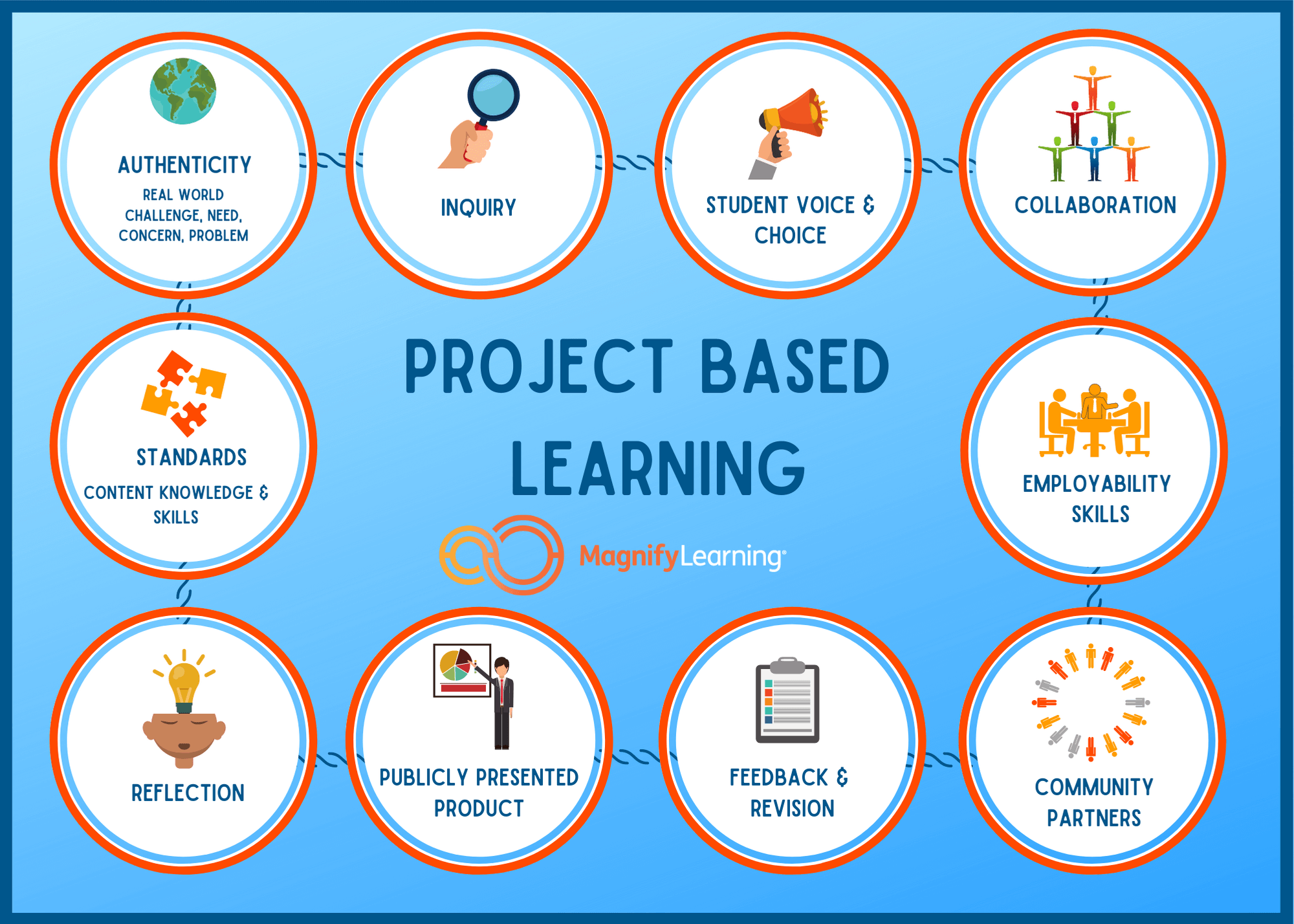Back to What is PBL?
What are the Core Components of PBL?
To be considered truly authentic, high-quality Project Based Learning, each PBL Unit should be comprised of the following Core Components. When you remove any of these components, the PBL process and impact on student learning is weakened. When planning a PBL Unit, ensure it incorporates each of the following elements.
Standards-Content Knowledge & Skills: The PBL Unit demonstrates a range of content knowledge that is clearly focused on conceptual development and is integrated through workshops/lessons
Authenticity & Relevance-Addressed a real-world challenge, need, problem, or concern: The PBL Unit is authentic and relevant for students and must address community-driven issues. Adults in the "real world" are likely to tackle the problem or question addressed in the PBL Unit.
Inquiry: The PBL Unit contains major phases of the challenge, and helps the students organize their to-do lists without overly prescribing tasks.
Student Voice & Choice: The PBL Unit includes multiple opportunities for students to provide creative solutions to the challenge, and allows students to contribute individually to the group according to their respective talents and skills.
Collaboration: The PBL Unit design intentionally supports group interactions through various strategies and allows students to engage in cooperative learning activities that promote productive interdependence, individual accountability, and positive interaction among the students.
Employability (21st Century) Skills: The PBL Unit incorporates employability skills, i.e. critical thinking, communication, collaboration, technology use, innovation, self-direction, persistence, which are assessed both formatively and summative throughout the PBL.
Community Partners: The PBL Unit involves community partners who have played an integral role throughout the PBL and provide feedback and/or contribute to the final evaluation.
Feedback & Revision: Students receive frequent and timely feedback on their works-in-progress from teachers, mentors, and peers and are given time to use the feedback to revise and improve their end products.
Publicly Presented Product: The final end product is a culminating exhibition, presentation, or activity in front of an informed audience which addresses and authentic challenge posed by the community partner.
Reflection: Throughout the course of the PBL Unit and afterwards there are deliberate times of reflection in regards to learning and progress.

